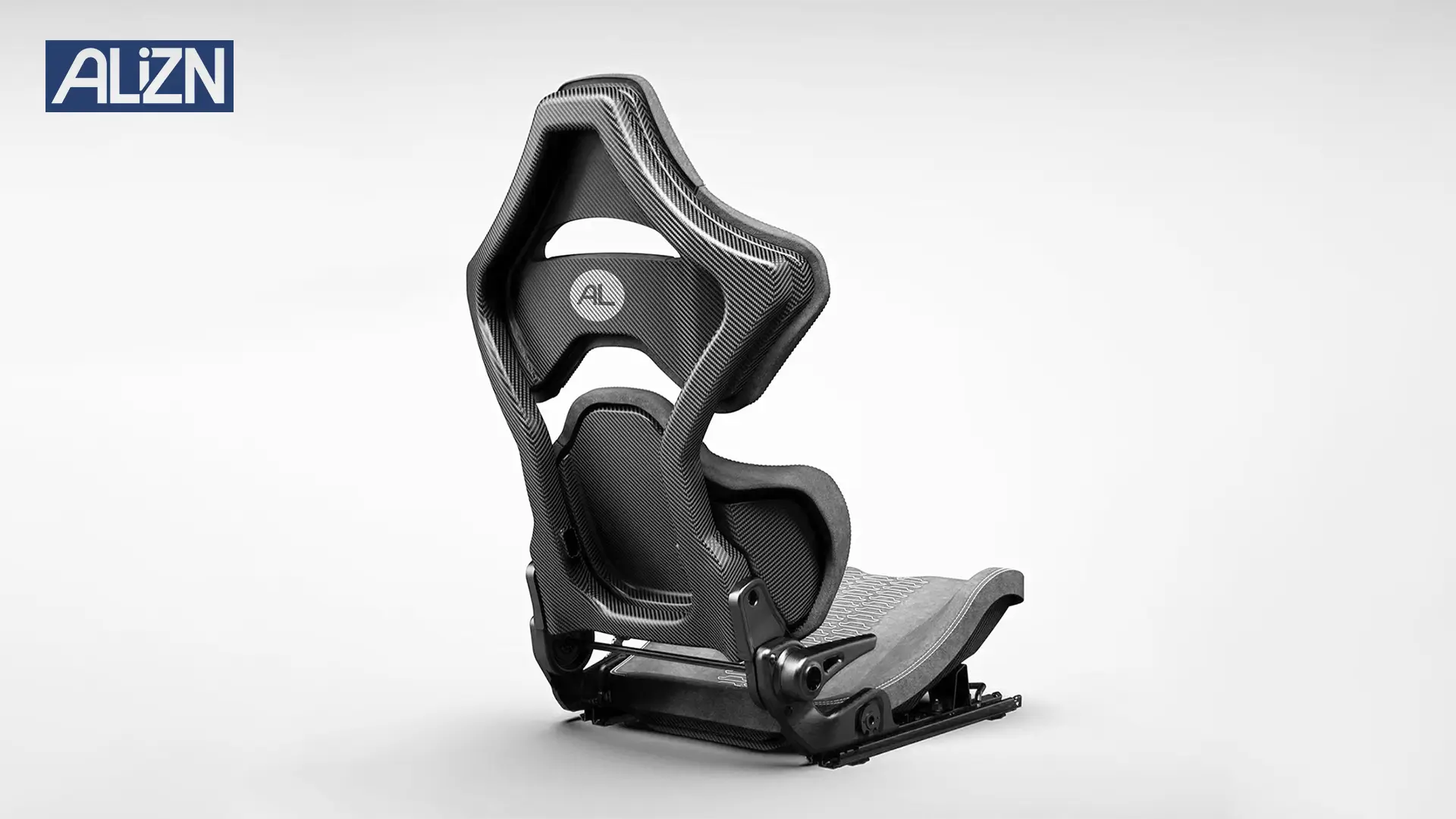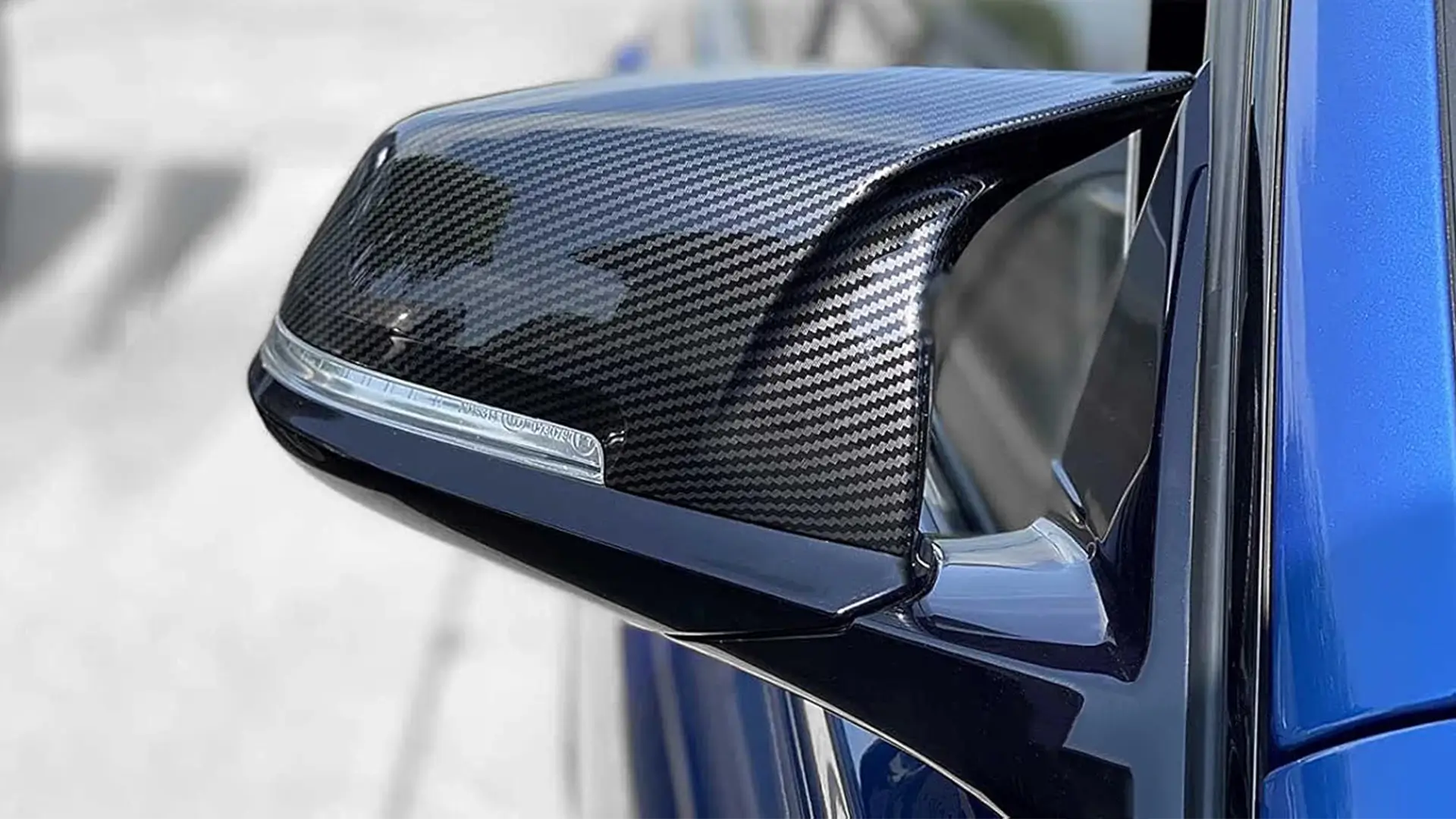The Appeal of Carbon Fiber Seats
A carbon fiber seat offers significant advantages over traditional seats made from steel, aluminum, or leather. Its exceptional strength-to-weight ratio reduces vehicle weight, enhancing acceleration, handling, and fuel efficiency, which is critical for performance vehicles. Additionally, carbon fiber car seats provide a sleek, high-tech appearance that elevates a vehicle’s interior, making them a popular choice for both OEM manufacturers and aftermarket enthusiasts. At Alizn, we understand that different brands have unique priorities, whether it’s delivering uncompromising quality for luxury markets or balancing performance with affordability for broader applications. Below, we detail three manufacturing methods—autoclave, resin transfer molding (RTM), and hand layup with vacuum bagging—tailored to produce carbon fiber seats for high-end, mid-range, and entry-level markets, respectively.
High-End Manufacturing: Autoclave Process for Premium Carbon Fiber Seats
Understanding the Autoclave Process
The autoclave process is the pinnacle of carbon fiber seat manufacturing, favored by luxury automakers and high-performance racing brands. This method involves layering prepreg carbon fiber sheets into a precision-engineered mold designed for the seat’s shape. The mold is then sealed in a vacuum bag and placed in an autoclave, a specialized oven that applies high pressure and temperature to cure the material. This controlled environment ensures a flawless finish, maximum structural integrity, and minimal imperfections, making it ideal for premium carbon fiber bucket seat.
Advantages for Carbon Fiber Car Seats
Using the autoclave process, Alizn produces carbon fiber seat with superior strength and a polished, glossy surface finish. The high-pressure curing eliminates voids and air bubbles, resulting in a lightweight yet robust seat capable of withstanding the rigors of high-speed driving or racing conditions. The process also allows for intricate designs, enabling customization for ergonomic contours and aesthetic patterns, which are critical for premium carbon fiber bucket seat used in supercars or motorsport applications.
Who Should Choose This Method?
The autoclave process is ideal for brands targeting the luxury or high-performance market, where quality, precision, and exclusivity are paramount. If your brand focuses on supercars, racing vehicles, or premium aftermarket seat, this method delivers carbon fiber car seat that offer unmatched performance and a sophisticated appearance. While the process is resource-intensive, it is the preferred choice for customers prioritizing top-tier quality over cost considerations.
Key Features of Autoclave-Produced Carbon Fiber Seats
| Feature | Description |
|---|---|
| Material Quality | High-grade prepreg carbon fiber ensures consistency and strength. |
| Surface Finish | Smooth, glossy finish with no visible imperfections, ideal for luxury interiors. |
| Weight | Ultra-lightweight, optimizing vehicle performance and handling. |
| Durability | Exceptional resistance to impact, vibration, and wear, perfect for racing. |
| Cost | Higher due to advanced equipment, longer production time, and premium materials. |
Applications in Carbon Fiber Bucket Seats
For carbon fiber bucket seat, the autoclave process excels in producing rigid, form-fitting designs that provide superior driver support during high-speed cornering. The precision of this method ensures that each seat meets exact specifications, from the curvature of the backrest to the integration of mounting points, making it a top choice for motorsport teams and luxury vehicle manufacturers.
Mid-Range Manufacturing: Resin Transfer Molding (RTM) for Balanced Carbon Fiber Seats
What Is RTM?
Resin transfer molding (RTM) is a versatile and efficient method for producing mid-range carbon fiber seat. In this process, dry carbon fiber fabric is carefully placed into a two-part mold designed for the seat’s shape. Liquid resin is then injected under controlled pressure to saturate the fibers, and the mold is heated to cure the resin, forming a solid, lightweight seat. RTM offers a balance between quality and cost, making it a popular choice for aftermarket brands and mid-tier automakers seeking high-quality carbon fiber car seat without the premium price of autoclave production.
Benefits for Carbon Fiber Seats
RTM enables Alizn to produce carbon fiber seat with consistent quality, a smooth finish, and reliable structural integrity. The closed-mold system ensures even resin distribution, reducing material waste and improving the seat’s strength-to-weight ratio. This method is highly repeatable, making it suitable for medium-volume production runs while maintaining a high-quality appearance and performance, ideal for mid-range carbon fiber bucket seats used in sports cars or performance-oriented aftermarket applications.
Ideal Applications for RTM
RTM is perfect for brands that want to offer high-quality carbon fiber seat at a more accessible price point. It suits aftermarket companies targeting enthusiasts who value performance and aesthetics but prioritize affordability. RTM-produced seats are also suitable for mid-range sports cars and performance vehicles where cost-efficiency is a key consideration, delivering a balance of lightweight construction and durability.
Key Features of RTM-Produced Carbon Fiber Seats
| Feature | Description |
|---|---|
| Material Efficiency | Uses dry carbon fiber and injected resin, minimizing waste and optimizing costs. |
| Surface Finish | Smooth and consistent, requiring minimal post-processing for a polished look. |
| Weight | Lightweight, slightly heavier than autoclave seats but ideal for performance applications. |
| Durability | Strong and reliable, suitable for daily driving and moderate performance use. |
| Cost | Moderate, offering a cost-effective alternative to autoclave production. |
RTM for Carbon Fiber Bucket Seats
For carbon fiber bucket seat, RTM provides a cost-effective solution for producing seats with precise contours and reliable performance. The process allows for the integration of complex shapes and mounting points, making it suitable for aftermarket seats that need to balance driver support with affordability. RTM is particularly effective for brands aiming to scale production while maintaining a high standard of quality.
Entry-Level Manufacturing: Hand Layup and Vacuum Bagging for Cost-Effective Carbon Fiber Seats
How Hand Layup and Vacuum Bagging Works
For brands seeking cost-effective solutions, the hand layup and vacuum bagging process is an accessible method for producing carbon fiber seats. In this technique, skilled technicians manually layer carbon fiber fabric into a mold, applying liquid resin between each layer. The mold is then sealed in a vacuum bag, which removes air and compacts the material during curing, ensuring a solid bond. This process is less automated but highly flexible, making it ideal for low-volume production or custom designs.
Advantages for Carbon Fiber Car Seats
Hand layup with vacuum bagging allows Alizn to produce carbon fiber seats at a lower cost, making them accessible to aftermarket enthusiasts and budget-conscious brands. While the finish may require additional polishing compared to autoclave or RTM methods, the resulting seats are still lightweight and durable, offering a cost-effective solution for customization projects. This method is particularly suited for producing carbon fiber bucket seats for entry-level aftermarket applications or one-off designs.
Who Should Opt for This Method?
This method is best suited for brands targeting the entry-level aftermarket or modification market. If your brand focuses on affordable upgrades for car enthusiasts, small-scale custom projects, or prototyping, hand layup and vacuum bagging provide a practical solution. It’s also ideal for brands that prioritize flexibility and customization over high-volume production efficiency.
Key Features of Hand Layup and Vacuum Bagging Carbon Fiber Seats
| Feature | Description |
|---|---|
| Material Use | Standard carbon fiber fabric with manual resin application, reducing material costs. |
| Surface Finish | May require additional sanding or polishing for a refined appearance. |
| Weight | Lightweight, though slightly heavier than RTM or autoclave seats. |
| Durability | Adequate for general use, with good resistance to wear in non-extreme conditions. |
| Cost | Low, ideal for budget-conscious brands and small-scale projects. |
Applications in Carbon Fiber Bucket Seats
For carbon fiber bucket seats, hand layup and vacuum bagging offer a cost-effective way to produce custom or low-volume seats. This method allows for tailored designs, such as unique shapes or personalized patterns, making it a favorite for enthusiasts seeking distinctive aftermarket seats. While less consistent than higher-end methods, it provides a practical entry point for brands new to carbon fiber seat production.
Comparing Manufacturing Methods for Carbon Fiber Seats
Choosing the right manufacturing method for carbon fiber seats depends on your brand’s priorities, target market, and budget. The table below summarizes the key differences to help you make an informed decision:
| Manufacturing Method | Quality Level | Cost | Production Volume | Best For |
|---|---|---|---|---|
| Autoclave | Premium | High | Low to Medium | Luxury vehicles, racing bucket seats |
| Resin Transfer Molding (RTM) | Mid-Range | Moderate | Medium to High | Aftermarket brands, mid-tier sports cars |
| Hand Layup & Vacuum Bagging | Entry-Level | Low | Low | Budget modifications, custom projects |
Factors to Consider When Choosing a Manufacturing Method
Selecting the appropriate manufacturing process for your carbon fiber car seats requires careful evaluation of several factors:
Brand Positioning: If your brand targets the luxury or high-performance market, the autoclave process ensures unmatched quality and exclusivity, ideal for premium carbon fiber bucket seats. For mid-range or aftermarket brands, RTM offers a cost-effective balance, while hand layup suits budget-conscious or custom projects.
Performance Requirements: High-performance vehicles, especially those used in racing, benefit from the lightweight and durable properties of autoclave-produced seats. RTM seats provide sufficient performance for sports cars, while hand layup seats are suitable for aesthetic upgrades or moderate performance applications.
Budget Constraints: Autoclave production is the most expensive, followed by RTM, with hand layup being the most affordable. Align your choice with your financial goals to ensure cost-effectiveness.
Production Volume: RTM is ideal for medium to high volumes, making it suitable for scaled production. Autoclave suits lower volumes with premium quality, while hand layup is best for small runs or custom orders.
Customization Needs: Hand layup offers the most flexibility for bespoke designs, while RTM and autoclave provide consistency for standardized or semi-custom seats.
Why Partner with Alizn for Carbon Fiber Seats?
At Alizn, we leverage our expertise in carbon fiber manufacturing to deliver carbon fiber seats that meet the diverse needs of our B2B customers. Our state-of-the-art facilities and skilled team ensure that each seat, whether produced via autoclave, RTM, or hand layup, adheres to rigorous quality standards. We work closely with our clients to understand their brand vision, performance requirements, and budget, providing tailored solutions that enhance their vehicles and resonate with their target audience.
Conclusion
Carbon fiber seats are a transformative addition to any vehicle, offering lightweight performance, durability, and a premium aesthetic. By choosing the right manufacturing method—autoclave for luxury and racing applications, RTM for balanced performance and cost, or hand layup for affordable customization—you can align your carbon fiber car seats with your brand’s goals and market demands. At Alizn, we are committed to guiding you through this process, leveraging our expertise to deliver carbon fiber bucket seat that elevate your vehicles and delight your customers. Contact us today to explore how we can help bring your vision for custom carbon fiber parts to life, tailored to your brand’s unique needs.
Final Thoughts
As composite material experts, we are willing to provide you with critical assistance. The correct judgment now avoids cost overruns, delays, and disappointing results later.
Need advice on your custom carbon fiber part? Reach out to our team for expert guidance.




